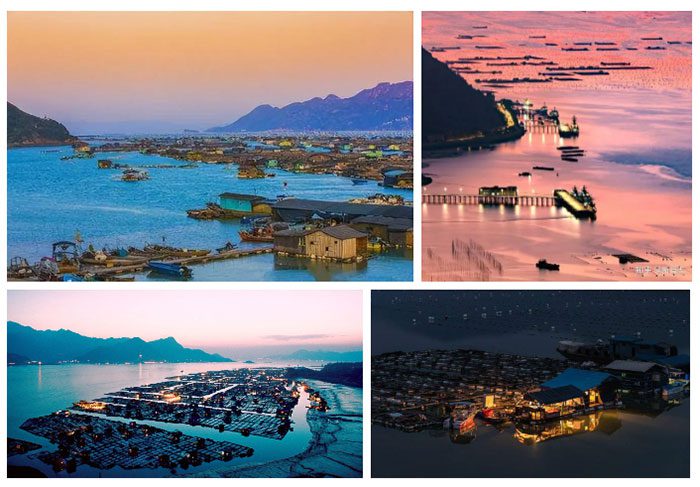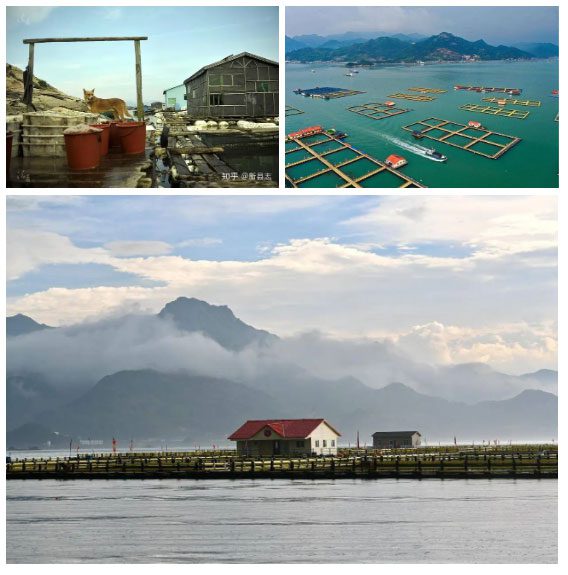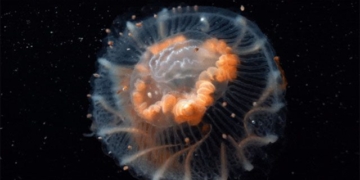Life in the “village on the sea” is no different from cities on land.
China has a place known as the “village on the sea”, where houses float atop the water. This unique and seemingly perilous location is actually a quaint harbor in eastern Fujian province.
Fujian Province (China) is famous for its seafood, and most residents primarily engage in fishing. In this vast expanse of water, there is a village “floating on the sea”, called San Dū Ao.
So how can this village exist on water? How was it constructed? Is it truly “floating” in the literal sense?

San Dū Ao village is rich in resources.
The residents of San Dū Ao have indeed built an entire “community” on the sea while ensuring a convenient and safe lifestyle.
One of the advantages is the excellent geographical environment. San Dū Ao can withstand strong winds and large waves, and it is abundant in resources, so the fishermen here do not worry about food and clothing.
No major natural disasters have ever occurred in San Dū Ao, and the fishermen here have lived for generations. Life in the “village on the sea” is safe and no different from urban life on land.
From a distance, San Dū Ao does not have high-rise buildings but only single-story houses, with the foundations built on foam floats, preventing flooding and allowing people to live in these homes.
The foam floats are covered with wooden planks and steel roofs, creating houses that bob on the water. Fishermen also construct their own aquaculture facilities around these floating homes. The houses and cages are densely packed. While not as ancient as Venice (Italy), they are still quite impressive.
Each house is almost connected to the next, forming a network of floating residences on the water’s surface, which appears very unique and eye-catching from afar.

The village appears very unique and eye-catching from afar.
San Dū Ao boasts beautiful scenery, with islands, mountains, and strange rock formations, along with ancient legends known only to the locals.
The San Dū Ao area is quite expansive, home to tens of thousands of fishermen. The houses and aquaculture facilities built by these fishermen vary in size and width. However, everything is constructed according to the principle of “there must be enough space between houses and cages for boats to pass through.” Fishermen rely on fishing boats as their primary tools; if the boats cannot navigate, they cannot maintain their normal livelihoods.
Life in San Dū Ao is no different from cities on land. Although it floats on the waves, it has electricity, radio networks, offices, streets, shops, bars, and entertainment spots…

San Dū Ao is quite expansive, home to tens of thousands of fishermen.
As fishermen in San Dū Ao primarily focus on catching fish, they wake up early every day to catch more seafood and increase their income. However, fishing does not always guarantee a bountiful catch. The fishing season depends on timing and weather…
Since fishing at night on the sea is very dangerous, the fishermen of San Dū Ao often take advantage of the early morning hours to catch more fish. The annual income of families depends on the amount of seafood caught during this time.
When it comes to seafood harvesting, fishermen not only catch fish but also sea cucumbers, abalone, clams, and more whenever they go out to sea. The most sought-after delicacy by tourists is the large yellow grouper – a specialty of San Dū Ao.
The seafood caught is divided into two parts: one is sold to traders (if the catch is too large), and the other is kept in cages for a while, then served to tourists who come to enjoy fresh seafood.
Some people come here just to experience living for a few days in this village on the sea. They want to see various marine creatures and participate in actual fishing trips. This has significantly improved the economy in San Dū Ao since the government implemented policies to promote tourism.


















































